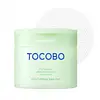What's inside
What's inside
 Key Ingredients
Key Ingredients

 Benefits
Benefits

 Concerns
Concerns

 Ingredients Side-by-side
Ingredients Side-by-side

Polyglyceryl-2 Triisostearate
EmulsifyingPhytosteryl Isostearyl Dimer Dilinoleate
EmollientDiisostearyl Malate
EmollientPolyisobutene
Synthetic Wax
AbrasiveHelianthus Annuus Seed Oil
EmollientOlea Europaea Fruit Oil
MaskingMicrocrystalline Wax
Emulsion StabilisingSynthetic Beeswax
Emulsion StabilisingEthylene/Propylene Copolymer
Abrasive1,2-Hexanediol
Skin ConditioningCalcium Carbonate
AbrasiveTitanium Dioxide
Cosmetic ColorantCalcium Titanium Borosilicate
AbrasiveParfum
MaskingCaprylyl Glycol
EmollientEthylhexylglycerin
Skin ConditioningPentaerythrityl Tetra-Di-T-Butyl Hydroxyhydrocinnamate
AntioxidantCI 77891
Cosmetic ColorantCI 15985
Cosmetic ColorantCI 73360
Cosmetic ColorantTocopherol
AntioxidantTin Oxide
AbrasiveWater
Skin ConditioningDiamond Powder
AbrasiveRuby Powder
Skin ConditioningSapphire Powder
Polyglyceryl-2 Triisostearate, Phytosteryl Isostearyl Dimer Dilinoleate, Diisostearyl Malate, Polyisobutene, Synthetic Wax, Helianthus Annuus Seed Oil, Olea Europaea Fruit Oil, Microcrystalline Wax, Synthetic Beeswax, Ethylene/Propylene Copolymer, 1,2-Hexanediol, Calcium Carbonate, Titanium Dioxide, Calcium Titanium Borosilicate, Parfum, Caprylyl Glycol, Ethylhexylglycerin, Pentaerythrityl Tetra-Di-T-Butyl Hydroxyhydrocinnamate, CI 77891, CI 15985, CI 73360, Tocopherol, Tin Oxide, Water, Diamond Powder, Ruby Powder, Sapphire Powder
Water
Skin ConditioningButylene Glycol
Humectant1,2-Hexanediol
Skin ConditioningDiethoxyethyl Succinate
SolventHydroxyethyl Urea
HumectantPolyglyceryl-10 Laurate
Skin ConditioningXanthan Gum
EmulsifyingGlyceryl Caprylate
EmollientEthylhexylglycerin
Skin ConditioningSodium PCA
HumectantTolnaftate
AntimicrobialPanthenol
Skin ConditioningLactococcus Ferment Lysate
Skin ConditioningLactobacillus Ferment Lysate
Skin ConditioningBifida Ferment Lysate
Skin ConditioningCentella Asiatica Leaf Extract
Skin ConditioningCitric Acid
BufferingDipropylene Glycol
HumectantNiacinamide
SmoothingHydrogenated Lecithin
EmulsifyingAsiaticoside
AntioxidantAsiatic Acid
Skin ConditioningMadecassic Acid
Skin ConditioningMelaleuca Alternifolia Leaf Extract
PerfumingSodium Hyaluronate
HumectantAloe Ferox Leaf Extract
Skin ConditioningTocopherol
AntioxidantBeta-Glucan
Skin ConditioningCeramide NP
Skin ConditioningHydroxypropyltrimonium Hyaluronate
Hydrolyzed Hyaluronic Acid
HumectantSodium Acetylated Hyaluronate
HumectantHyaluronic Acid
HumectantSodium Hyaluronate Crosspolymer
HumectantHydrolyzed Sodium Hyaluronate
Skin ConditioningPotassium Hyaluronate
Skin ConditioningParfum
MaskingWater, Butylene Glycol, 1,2-Hexanediol, Diethoxyethyl Succinate, Hydroxyethyl Urea, Polyglyceryl-10 Laurate, Xanthan Gum, Glyceryl Caprylate, Ethylhexylglycerin, Sodium PCA, Tolnaftate, Panthenol, Lactococcus Ferment Lysate, Lactobacillus Ferment Lysate, Bifida Ferment Lysate, Centella Asiatica Leaf Extract, Citric Acid, Dipropylene Glycol, Niacinamide, Hydrogenated Lecithin, Asiaticoside, Asiatic Acid, Madecassic Acid, Melaleuca Alternifolia Leaf Extract, Sodium Hyaluronate, Aloe Ferox Leaf Extract, Tocopherol, Beta-Glucan, Ceramide NP, Hydroxypropyltrimonium Hyaluronate, Hydrolyzed Hyaluronic Acid, Sodium Acetylated Hyaluronate, Hyaluronic Acid, Sodium Hyaluronate Crosspolymer, Hydrolyzed Sodium Hyaluronate, Potassium Hyaluronate, Parfum
Ingredients Explained
These ingredients are found in both products.
Ingredients higher up in an ingredient list are typically present in a larger amount.
1,2-Hexanediol is a synthetic liquid and another multi-functional powerhouse.
It is a:
- Humectant, drawing moisture into the skin
- Emollient, helping to soften skin
- Solvent, dispersing and stabilizing formulas
- Preservative booster, enhancing the antimicrobial activity of other preservatives
Ethylhexylglycerin (we can't pronounce this either) is commonly used as a preservative and skin softener. It is derived from glyceryl.
You might see Ethylhexylglycerin often paired with other preservatives such as phenoxyethanol. Ethylhexylglycerin has been found to increase the effectiveness of these other preservatives.
Parfum is a catch-all term for an ingredient or more that is used to give a scent to products.
Also called "fragrance", this ingredient can be a blend of hundreds of chemicals or plant oils. This means every product with "fragrance" or "parfum" in the ingredients list is a different mixture.
For instance, Habanolide is a proprietary trade name for a specific aroma chemical. When used as a fragrance ingredient in cosmetics, most aroma chemicals fall under the broad labeling category of “FRAGRANCE” or “PARFUM” according to EU and US regulations.
The term 'parfum' or 'fragrance' is not regulated in many countries. In many cases, it is up to the brand to define this term.
For instance, many brands choose to label themselves as "fragrance-free" because they are not using synthetic fragrances. However, their products may still contain ingredients such as essential oils that are considered a fragrance by INCI standards.
One example is Calendula flower extract. Calendula is an essential oil that still imparts a scent or 'fragrance'.
Depending on the blend, the ingredients in the mixture can cause allergies and sensitivities on the skin. Some ingredients that are known EU allergens include linalool and citronellol.
Parfum can also be used to mask or cover an unpleasant scent.
The bottom line is: not all fragrances/parfum/ingredients are created equally. If you are worried about fragrances, we recommend taking a closer look at an ingredient. And of course, we always recommend speaking with a professional.
Learn more about ParfumTocopherol (also known as Vitamin E) is a common antioxidant used to help protect the skin from free-radicals and strengthen the skin barrier. It's also fat soluble - this means our skin is great at absorbing it.
Vitamin E also helps keep your natural skin lipids healthy. Your lipid skin barrier naturally consists of lipids, ceramides, and fatty acids. Vitamin E offers extra protection for your skin’s lipid barrier, keeping your skin healthy and nourished.
Another benefit is a bit of UV protection. Vitamin E helps reduce the damage caused by UVB rays. (It should not replace your sunscreen). Combining it with Vitamin C can decrease sunburned cells and hyperpigmentation after UV exposure.
You might have noticed Vitamin E + C often paired together. This is because it is great at stabilizing Vitamin C. Using the two together helps increase the effectiveness of both ingredients.
There are often claims that Vitamin E can reduce/prevent scarring, but these claims haven't been confirmed by scientific research.
Learn more about TocopherolWater. It's the most common cosmetic ingredient of all. You'll usually see it at the top of ingredient lists, meaning that it makes up the largest part of the product.
So why is it so popular? Water most often acts as a solvent - this means that it helps dissolve other ingredients into the formulation.
You'll also recognize water as that liquid we all need to stay alive. If you see this, drink a glass of water. Stay hydrated!
Learn more about Water